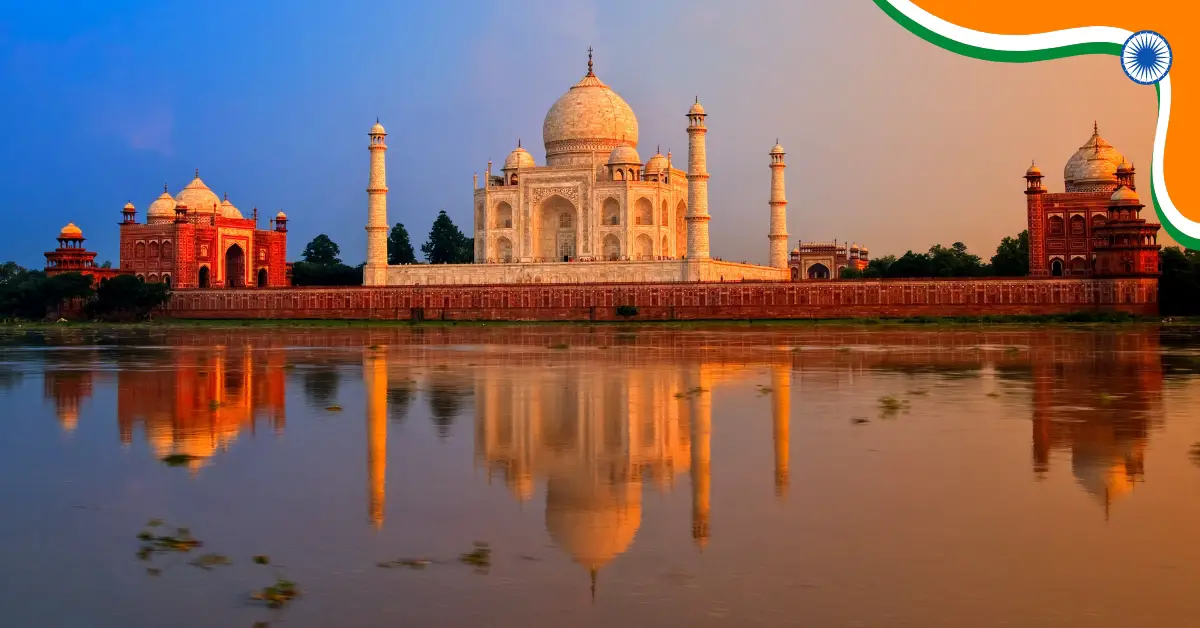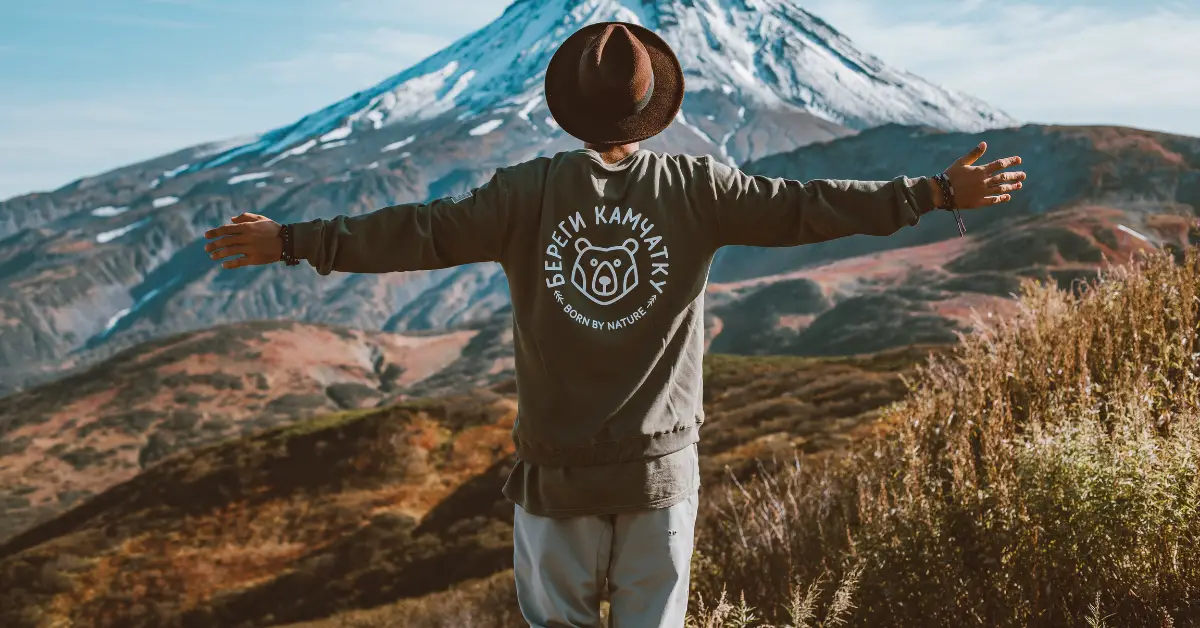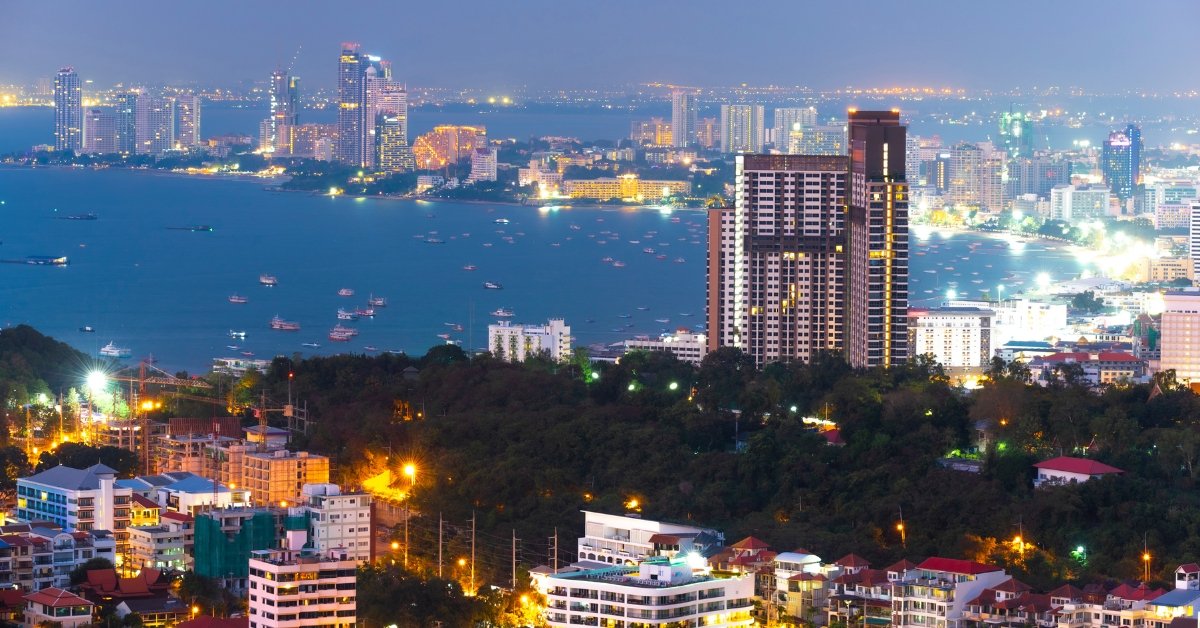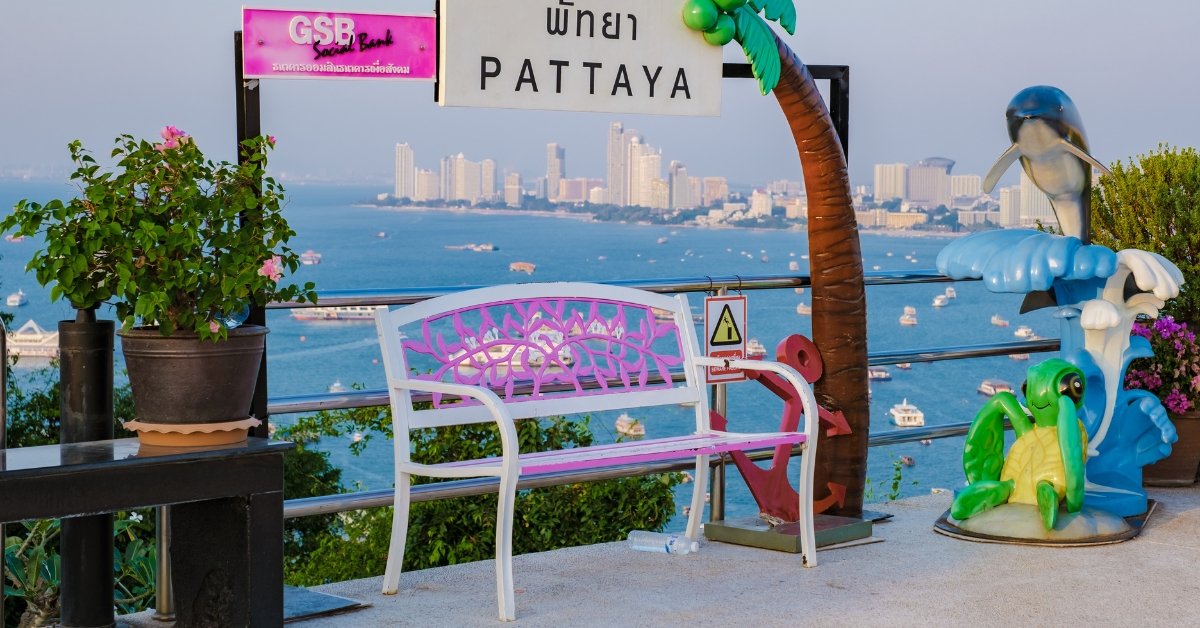Explore travel blogger Thousif Ziya’s 12 essential travel tips for first-time visitors to India. With expert local insights, make your journey smooth and memorable.
Table of Contents
Insider Tips from a Native Indian Travel Blogger
As a native of India and a seasoned traveler, I, Thousif Ziya, am thrilled to share my insights and tips to help you navigate this incredible country.
Traveling to India for the first time can be an overwhelming experience with its vibrant cultures, diverse landscapes, and rich history.
However, proper guidance can make your journey smooth, enjoyable, and unforgettable.
India is a land of contrasts where ancient traditions coexist with modern innovations.
From the bustling streets of Delhi to the serene backwaters of Kerala, each region offers its unique charm.
To help you make the most of your visit, I have compiled a list of 12 essential travel tips tailored explicitly for first-time visitors.
Whether you are planning to explore the royal palaces of Rajasthan, savor the culinary delights of street food, or soak in the spiritual ambiance of sacred sites, these tips will equip you with the knowledge and confidence to travel like a local.
First Time Visitors to India
So, get ready to embark on an adventure of a lifetime as you discover the magic of India with my expert advice.
Here are my 12 essential travel tips for first-time visitors to India.
1. Slow Down and Savor Every Moment
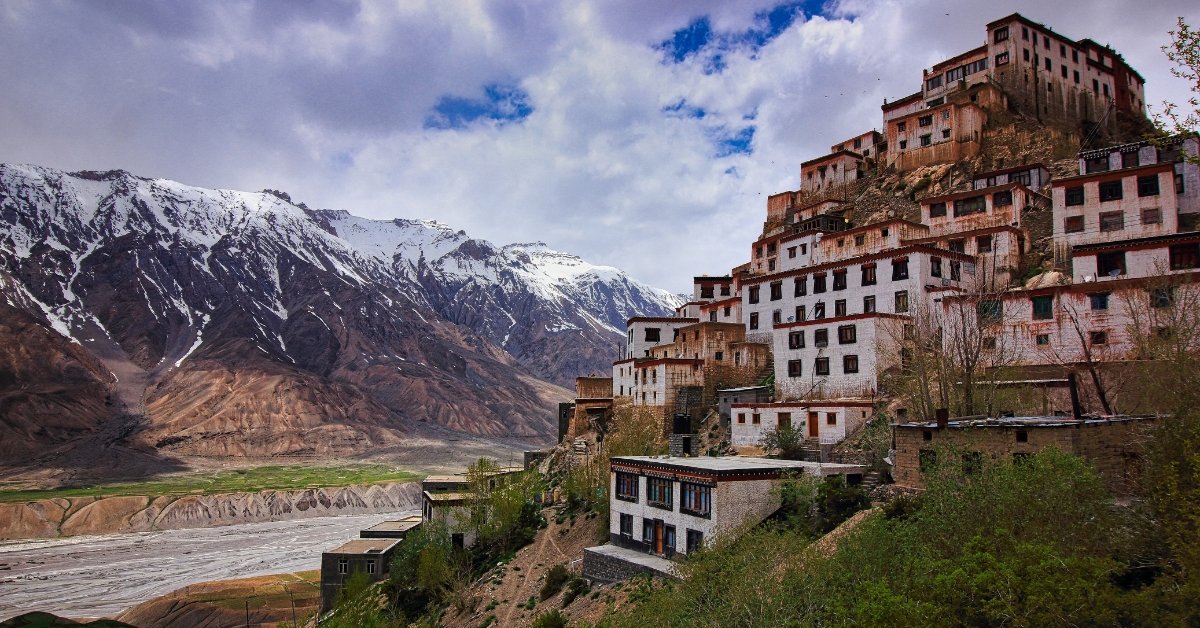
Traveling to India for the first time can be overwhelming due to the country’s sheer size and diversity.
It is tempting to rush through the major attractions and try to see everything.
However, the key to genuinely experiencing India lies in slowing down and savoring each moment.
Plan Your Itinerary Wisely
When planning your itinerary, focus on one or two regions rather than trying to cover the entire country.
India is vast, and each region has its unique culture, history, and attractions.
For example:
- North India: Explore the historical and cultural richness of Rajasthan, visit the Taj Mahal in Agra, and experience the spirituality of Varanasi.
- South India: Enjoy the serene backwaters of Kerala, Tamil Nadu’s temples, and Karnataka’s vibrant cities.
- Northeast India: Discover the untouched beauty of Assam, Meghalaya, and Arunachal Pradesh.
- West India: Experience the bustling city life of Mumbai, the beaches of Goa, and the heritage sites of Gujarat.
Take Your Time at Each Destination
Instead of rushing from one destination to another, spend more time in each place to fully appreciate its beauty and charm.
This approach allows you to:
- Immerse Yourself in the Local Culture: Interact with locals, attend festivals, and participate in traditional activities.
- Explore Off the Beaten Path: Venture beyond the tourist spots to discover hidden gems, such as small villages, local markets, and lesser-known historical sites.
- Relax and Unwind: Find moments of relaxation by enjoying a leisurely meal, walking through a park, or simply sitting by a river or lake.
Tip: Consider spending a few days in one location to get a feel for the place truly. For instance, spend a week in Udaipur to explore its palaces, lakes, and local culture at a relaxed pace.
Engage in Meaningful Activities
Engaging in meaningful activities can deepen your connection with the places you visit.
Here are some ideas:
- Take a Cooking Class: Learn how to prepare traditional Indian dishes and bring a piece of India home.
- Join a Yoga Retreat: India is the birthplace of yoga, and participating in a yoga retreat can be a rejuvenating experience.
- Volunteer: Spend some time volunteering with local organizations. This helps the community and provides a deeper understanding of the local way of life.
Embrace the Local Pace of Life
India operates at its own pace, which can be slower and more relaxed than Western standards. Embrace this slower pace by:
- Practicing Patience: Things may only sometimes happen on time, and plans may change unexpectedly. Embrace these moments as part of the experience.
- Observing Daily Life: Take time to sit in a local café, watch the bustling street markets, or observe the daily activities of the locals.
Travel Slow for a Deeper Experience
Traveling slowly reduces stress and allows for a richer, more immersive experience.
Here are some tips to slow down your travel:
- Stay in One Place Longer: Instead of hopping from city to city, explore it in one place longer.
- Use Local Transportation: Opt for slower modes of transportation, such as trains and buses, which allow you to see more of the countryside and interact with locals.
- Walk or Cycle: Explore cities and towns on foot or by bicycle. This slower pace lets you notice the small details you might miss otherwise.
Reflect on Your Experiences
Take time to reflect on your experiences each day.
Keeping a travel journal can be a great way to record your thoughts and feelings, helping you to process and appreciate your journey more fully.
“Travel is not just about seeing new places; it’s about experiencing them.”
Thousif Ziya
By slowing down and savoring each moment, your trip to India will become a series of unforgettable experiences rather than a blur of sights and sounds.
Enjoy the journey, and let India leave a lasting impression on your heart.
2. Embrace the Unexpected

India is a land of surprises and spontaneous adventures.
Things may not always go as planned, but this unpredictability can lead to some of the most memorable experiences.
Here are some tips to help you embrace the unexpected:
Stay Flexible with Your Plans
While having a basic itinerary is good, leave room for flexibility.
You might discover a local festival, stumble upon a beautiful village, or get a recommendation from a fellow traveler that you will want to take advantage of.
Being open to changing your plans can lead to some of the best parts of your trip.
Learn to Go with the Flow
India can be chaotic, with bustling streets, unexpected delays, and cultural nuances that may be new to you. Instead of getting frustrated, try to go with the flow.
Take a deep breath, observe your surroundings, and immerse yourself in the experience.
“Travel is about the gorgeous feeling of teetering in the unknown.”
Anthony Bourdain
Cultivate Patience
Patience is essential when traveling in India.
Whether waiting for a delayed train, navigating through traffic, or dealing with language barriers, maintaining a calm and patient attitude will make your Journey smoother and more enjoyable.
Engage with Locals
Some of the best experiences in India come from interactions with locals.
Feel free to start a conversation, ask questions, and learn from the people around you.
They can offer invaluable insights, share hidden gems, and better understand the culture.
Fact: India is home to more than 2,000 distinct ethnic groups, making it one of the most culturally diverse countries in the world.
Expect the Unexpected
India is a country of contrasts.
You might see modern skyscrapers next to ancient temples, luxury cars sharing the road with ox carts, and high-tech cities surrounded by rural landscapes.
Embrace these contrasts and appreciate the unique blend of old and new.
Keep an Open Mind
Be prepared for cultural differences and new ways of thinking.
Whether it is food, customs, or daily routines, keeping an open mind will enrich your travel experience.
Try new foods, participate in local traditions, and respect cultural practices.
Find Beauty in Chaos
The chaos of India can be overwhelming, but it also has its beauty.
The vibrant markets, colorful festivals, and busy streets all contribute to the country’s unique charm.
Instead of focusing on the disorder, look for the beauty within it.
“India hits you like a wave. If you resist, you will be knocked down. But if you dive into it, you will be all right.”
Evelyn Greenslade
Capture Moments, Not Just Photos
While it is great to take photos, remember to live in the moment.
Some cherished memories come from simply being present and soaking in the experience.
Write a journal, sketch, or take a mental snapshot of the moments that move you.
Travel Tips for Embracing the Unexpected
| Tip | Description |
|---|---|
| Stay Curious | Ask questions, explore side streets, and be open to new experiences. |
| Be Adaptable | Be ready to adapt to changing plans and new situations. |
| Stay Positive | A positive attitude can turn unexpected challenges into fun adventures. |
| Trust the Journey | Sometimes the best moments are unplanned. Trust that your journey will unfold as it should. |
Embracing the unexpected is a vital part of traveling in India.
By keeping an open mind and a flexible attitude, you will be able to fully appreciate the rich and diverse experiences this incredible country has to offer.
3. Be Mindful of Whom You Trust: Stay Vigilant
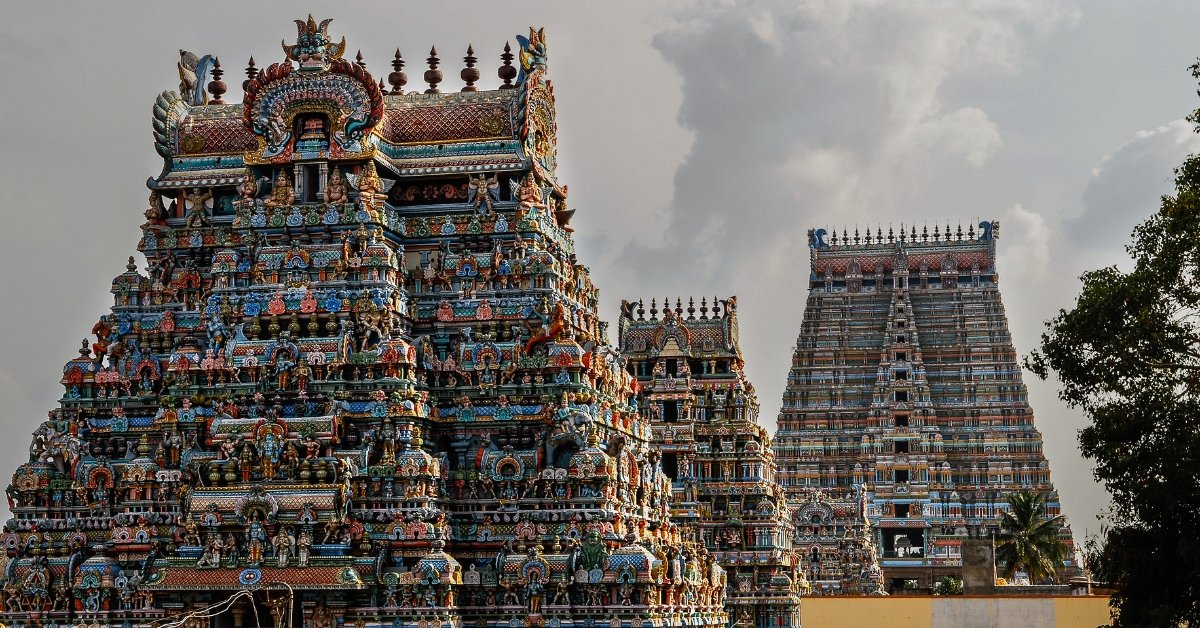
While it is essential to keep an open heart and mind when traveling, especially in a diverse and bustling country like India, it is equally important to maintain a healthy level of skepticism.
Here are some detailed tips and insights to help you navigate your interactions safely and confidently.
Beware of Scams and Con Artists
India is known for its warm hospitality, but like any other country, it has its share of scammers.
These individuals often target tourists, especially first-time visitors unfamiliar with local customs and prices.
- Common Scams: Be aware of the most common scams, such as the “your hotel is closed/burned down” trick, overpriced taxi or auto-rickshaw rides, and inflated prices for goods and services. For example, a driver might tell you that your chosen hotel is no longer operating and offer to take you to another hotel where they receive a commission.
- Verify Information: Always double-check any alarming information you receive. If someone tells you that a major tourist attraction is closed for the day or your train has been canceled, verify it through official sources or by contacting your accommodation.
Learn to Negotiate
Negotiation is a part of daily life in India, especially in markets and with transportation services.
Being aware of fair prices can prevent you from being overcharged.
- Ask Locals for Prices: Before buying something or hiring a service, ask a local or a fellow traveler about the typical prices. This will give you a benchmark for negotiations.
- Stay Polite but Firm: When bargaining, be polite but firm. Knowing when to walk away is also a good strategy, as vendors might lower their prices when they see you are not desperate to buy.
Trust but Verify
Building trust is essential, but it is wise to be cautious.
- Trusted Sources: Use trusted sources like your hotel concierge, official tourist information centers, or reputable travel agencies for recommendations and bookings.
- Online Reviews: Check reviews for restaurants, hotels, and tour operators. Websites like TripAdvisor, Google Reviews, and Booking.com can provide insights from other travelers.
Be Cautious with Strangers
While meeting new people is one of the joys of travel, be cautious about whom you share personal information with.
- Limit Sharing Personal Details: Avoid sharing too many personal details or your travel plans with strangers. This includes keeping where you are staying or your daily itinerary private.
- Social Media Caution: Be mindful of your social media posts. To prevent unwanted attention, avoid sharing real-time updates of your location and activities.
Keep Your Belongings Safe
Pickpocketing and petty theft can happen in crowded areas, so take precautions to keep your belongings safe.
- Secure Your Bags: Use anti-theft bags or money belts, and keep your bags zipped and close to your body in crowded places.
- Avoid Flashy Displays of Wealth: Do not flaunt expensive jewelry, electronics, or large amounts of cash. This can make you a target for theft.
Emergency Contacts and Resources
Always have a plan in case things go wrong.
- Local Contacts: Have the contact details of your hotel, local friends, or acquaintances handy. It is also wise to know the local emergency numbers.
- Tourist Helpline: Keep the Tourist Helpline number (1-800-111363) handy. This service can provide assistance in multiple languages and help resolve various issues you might encounter.
“In a new place, it is good to trust but verify. A little caution can go a long way in ensuring a smooth and enjoyable travel experience.”
Thousif Ziya
By being mindful of whom you trust and staying vigilant, you can enjoy India’s rich and diverse experiences while minimizing the risks.
Fact: Did you know that over 1,600 languages are spoken in India? This diversity can sometimes lead to misunderstandings, so always double-check information.
4. Prioritize Your Safety

Traveling in India is generally safe, but taking precautions is essential, especially for solo travelers.
Here are some detailed safety tips to ensure a secure and enjoyable trip:
Stay Connected with a Local SIM Card
A local SIM card is crucial for communication, navigation, and accessing services requiring OTP verification.
Obtain one at the airport upon arrival to ensure you are connected throughout your trip.
This allows you to:
- Make local calls and stay in touch with friends or tour operators.
- Use GPS and map applications to navigate unfamiliar areas.
- Receive essential travel updates and alerts.
Choose Safe and Popular Destinations
Before setting off, research your destinations thoroughly.
Opt for areas popular among travelers with good infrastructure, reliable accommodation, and a strong presence of other tourists.
This minimizes the risk of isolation and ensures you have access to the necessary amenities.
Travel During Daylight Hours
Plan your travel so you arrive on time at night.
Traveling during daylight hours reduces the risk of encountering unsafe situations.
If you must travel at night, use reputable transportation services and avoid isolated areas.
Be Cautious on Social Media
While sharing your travel experiences on social media is tempting, be mindful of revealing your current location.
Avoid posting real-time updates and share your experiences after you have left the location.
This precaution helps prevent unwanted attention and enhances your safety.
Stay Alert to Your Surroundings
Always be aware of your surroundings, especially in crowded markets, train stations, and tourist attractions.
Here are some specific tips:
- Keep an eye on your belongings: Use anti-theft bags, and keep your valuables close to your body.
- Avoid displaying wealth: Do not wear expensive jewelry or flash large amounts of cash.
- Trust your instincts: Remove yourself from the situation if something feels off.
Use Reputable Transportation Services
When using public transportation, opt for reputable services.
For taxis and auto-rickshaws, use apps like Uber or Ola, which allow you to track your ride and share your trip details with others.
If you need to negotiate fares, agree on the price before starting your journey to avoid disputes.
Know Emergency Numbers and Locations
Keep the Tourist Helpline number handy: 1-800-111363.
Also, familiarize yourself with the locations of local police stations, hospitals, and your country’s embassy or consulate.
Having this information readily available can be crucial in an emergency.
Join Travel Groups and Forums
Joining travel groups and forums can provide valuable insights and support.
Engage with communities like Lonely Planet’s Facebook Group or TripAdvisor, where you can ask questions and get advice from seasoned travelers.
Additionally, consider joining local travel meetups to connect with fellow travelers in India.
Respect Local Customs and Dress Modestly
India is a traditional society with diverse cultures and customs.
Dressing modestly shows respect and helps you blend in and avoid unwanted attention.
For women, wearing long skirts, pants, and shirts with sleeves is advisable.
Men should avoid wearing shorts in more conservative areas.
Tip: Carry a scarf or shawl to cover your head and shoulders when visiting religious sites.
By following these detailed safety tips, you can ensure a secure and enjoyable travel experience in India.
Remember, being prepared and aware is the key to a successful journey.
5. Join a Small Group Tour: Ease Your Way In

Traveling to India for the first time can be overwhelming due to its size, diversity, and sometimes chaotic environment.
One of the best ways to ease into the Indian experience is by joining a small group tour.
Here is why this can be an excellent option and how to make the most of it:
Benefits of Small Group Tours
- Guided Expertise:
- Local Knowledge: Experienced local guides can offer insights that you wouldn’t get traveling alone. They know the best spots, hidden gems, and cultural nuances.
- Safety: Traveling with a group provides an added layer of safety, especially in unfamiliar surroundings. Tour operators ensure that the travel routes and accommodations are safe and reputable.
- Convenience:
- Itinerary Planning: Small group tours take care of all the planning. From accommodation and transportation to daily itineraries, everything is pre-arranged, allowing you to relax and enjoy the trip.
- Language Barrier: India has numerous languages and dialects. Having a guide who speaks the local language can help you navigate and communicate more effectively.
- Social Experience:
- Meet Like-minded Travelers: Group tours offer the opportunity to meet and connect with fellow travelers who share your interests. This can make your trip more enjoyable and provide companionship.
- Shared Experiences: Exploring new places with others can enhance your travel experience. You can share stories, experiences, and create lasting memories together.
Choosing the Right Tour
When selecting a small group tour, consider the following factors to ensure it aligns with your interests and needs:
- Tour Size:
- Smaller Groups: Opt for tours with fewer participants (usually 10-15 people). Smaller groups offer a more personalized experience and easier interaction with the guide.
- Focus and Interests:
- Specialized Tours: Look for tours that match your interests, whether it’s cultural exploration, adventure activities, culinary experiences, or wildlife safaris.
- Reputation and Reviews:
- Research: Read reviews and testimonials from previous participants. Reputable tour companies will have positive feedback and detailed information about their offerings.
- Inclusions:
- Check What’s Included: Ensure you know what is covered in the tour cost, such as meals, entrance fees, accommodation, and transportation. This helps avoid unexpected expenses.
Maximizing Your Group Tour Experience
- Engage with the Guide:
- Ask Questions: Don’t hesitate to ask your guide questions. They are there to help you understand the culture, history, and significance of the places you visit.
- Local Tips: Guides can provide valuable tips on where to shop, eat, and explore during your free time.
- Participate Actively:
- Get Involved: Take part in all activities and excursions offered by the tour. This is a great way to fully experience the destination and make the most of your trip.
- Cultural Etiquette: Respect local customs and traditions. Your guide can advise you on appropriate behavior and dress, especially in religious sites.
- Stay Flexible:
- Be Open to Changes: Sometimes, itineraries may change due to weather or other unforeseen circumstances. Stay adaptable and enjoy the new experiences that come your way.
Recommended Small Group Tour Providers
- India for Beginners: Specializes in creating custom tours with a high level of personal service, including meeting travelers at the airport and providing a 24/7 tour manager.
- Intrepid Travel: Offers a variety of small group tours across India, focusing on responsible travel and authentic experiences.
- G Adventures: Known for their immersive cultural tours, they provide small group adventures that highlight local communities and traditions.
Joining a small group tour can make your first trip to India smoother, safer, and more enriching.
It allows you to enjoy the journey with the support of knowledgeable guides and the camaraderie of fellow travelers.
Embrace the adventure and let the magic of India unfold with the ease and comfort of a well-organized tour.
6. Take the Train for an Authentic Experience
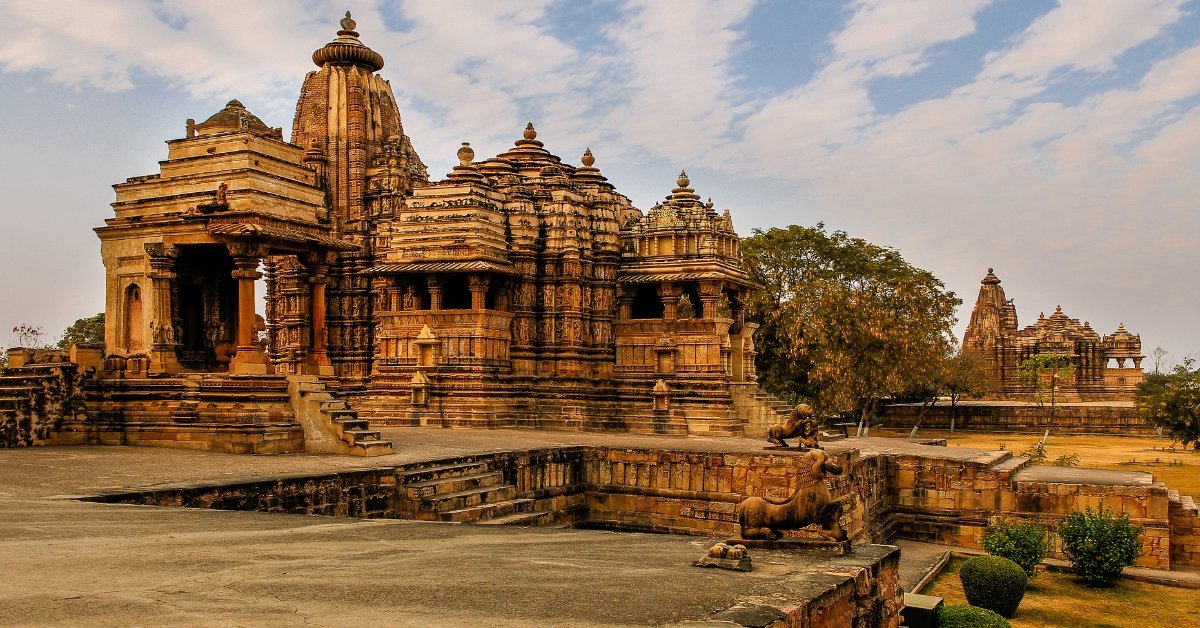
Traveling by train in India is a quintessential experience that offers a unique glimpse into the country’s diverse landscapes and vibrant culture.
Here is how to make the most of your train journey:
Understand the Classes
Indian trains come with various classes, each offering a different level of comfort and amenities.
| Class | Description |
|---|---|
| 1AC (First Class AC) | Most luxurious with private cabins, bedding, and air conditioning. Ideal for long journeys. |
| 2AC (Second Class AC) | Comfortable with air conditioning, privacy curtains, and bedding. Good balance of comfort and cost. |
| 3AC (Third Class AC) | More economical, with air conditioning and bedding, but less privacy. Great for budget travelers. |
| CC (Chair Car) | Comfortable seating, air-conditioned, ideal for short day journeys. |
| EC (Executive Chair Car) | Like CC but with more space and better seating. Often found on premium trains like Shatabdi Express. |
| Sleeper Class | Non-AC, economical, and popular among locals. Provides an authentic local experience. |
| General Class | Very basic and often crowded. Best avoided unless you’re seeking an extreme budget experience. |
Book in Advance
Indian trains can get fully booked, especially during peak travel seasons and festivals.
It is wise to book your tickets well in advance through the official Indian Railways website or other authorized booking platforms.
Choose the Right Train
Not all trains are created equal.
For a comfortable and timely journey, opt for premium trains like Shatabdi Express, Rajdhani Express, and Duronto Express.
These trains are known for their punctuality, cleanliness, and onboard catering services.
Pro Tip: For an unforgettable luxury experience, consider the Palace on Wheels or the Maharajas’ Express. These luxury trains offer a royal experience with exquisite interiors, gourmet dining, and personalized services.
Travel Light and Secure Your Belongings
Indian trains, especially in lower classes, can be crowded.
Travel light to make your journey more comfortable.
Ensure your belongings are secure by using locks on your luggage and keeping valuables in a money belt or secure bag.
Enjoy the Scenic Views
One of the greatest pleasures of train travel in India is the ever-changing scenery.
From lush green fields and bustling towns to serene rivers and majestic mountains, there’s always something captivating to see outside your window.
“The journey itself is my home.”
Matsuo Basho
Sample Local Delicacies
Many long-distance trains in India offer onboard catering.
Don’t miss the chance to sample local delicacies.
Alternatively, vendors often sell regional snacks at major stations, providing a taste of local flavors.
Interact with Fellow Passengers
Train journeys in India offer a great opportunity to meet and interact with locals.
Indians are known for their hospitality and curiosity about travelers.
Striking up a conversation can lead to learning more about local cultures, traditions, and even travel tips.
Stay Safe and Comfortable
For overnight journeys, bring a travel pillow, earplugs, and an eye mask for a more comfortable sleep.
It is also a good idea to carry some snacks, bottled water, and personal hygiene items like hand sanitizer and tissues.
Useful Apps and Services
Several apps can enhance your train travel experience in India.
IRCTC Rail Connect for booking tickets, RailYatri for real-time updates and train schedules, and Where is my Train for offline train tracking are some of the most helpful.
Fact: Indian Railways is the fourth-largest railway network in the world, transporting over 8 billion passengers annually.
Embrace the Journey
Traveling by train in India is more than just a mode of transport; it is an adventure in itself.
By understanding the different classes, booking in advance, choosing the right train, and preparing for your journey, you can make your train travel experience memorable and enjoyable.
So, hop on board, sit back, and watch the mesmerizing landscapes of India unfold before your eyes.
“The train journeys in India are not just about getting from one place to another; they’re an adventure in themselves.”
Thousif Ziya
7. Indulge in Local Cuisine: Savor the Flavors of India
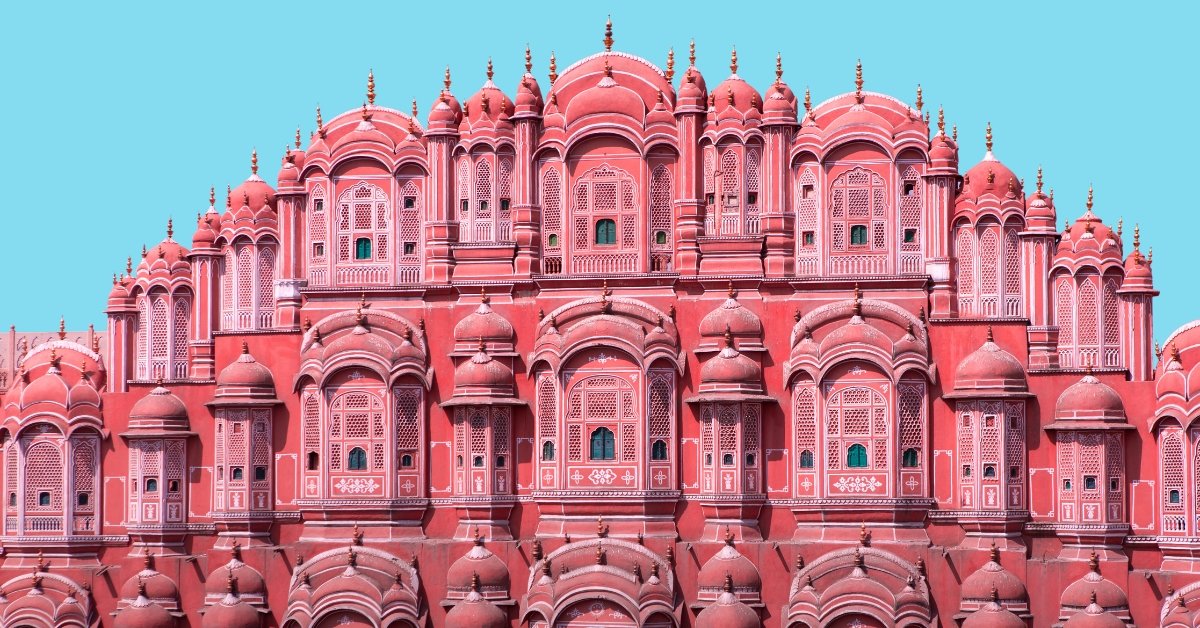
India is a culinary paradise with a rich tapestry of flavors, spices, and cooking techniques.
As a first-time traveler, diving into the local cuisine is an absolute must.
Here are some tips and recommendations to help you enjoy the gastronomic delights of India while staying safe and healthy.
Must-Try Indian Dishes
- Masala Chai: This spiced tea is a staple across India, perfect for starting your day or enjoying during a break.
- Biryani: A fragrant rice dish made with spices, rice, and usually chicken, mutton, or vegetables.
- Pakoras: Deep-fried fritters made from vegetables like potatoes, onions, and spinach, often served with chutney.
- Dosas: Thin, crispy crepes made from fermented rice and lentil batter, usually served with sambar and coconut chutney.
- Gulab Jamun: Sweet, deep-fried balls soaked in sugary syrup, often flavored with cardamom and rose water.
- Kheer: A creamy rice pudding flavored with cardamom, saffron, and nuts.
Street Food: A Must-Experience with Caution
Street food is a big part of India’s culinary scene. While it’s tempting and delicious, take these precautions to avoid foodborne illnesses:
- Choose Busy Stalls: Higher turnover means fresher food. Opt for stalls with long lines and a good reputation among locals.
- Watch the Cooking Process: Select vendors who cook food in front of you to ensure it’s freshly prepared.
- Avoid Raw Foods: Steer clear of salads and uncooked vegetables. Opt for fruits you can peel, like bananas or oranges.
- Drink Bottled Water: Stick to bottled or filtered water. Avoid ice unless you’re sure it’s made from purified water.
Dining in Restaurants: Tips for a Safe Experience
- Research Ahead: Look for restaurants with good reviews and high ratings from travelers and locals.
- Stick to Cooked Dishes: Even in restaurants, it’s safer to eat fully cooked meals rather than raw salads.
- Check Cleanliness: Choose places that appear clean and well-maintained, with hygiene standards you’re comfortable with.
“To get a true flavor of India, dive into its street food and local dishes. Every bite tells a story.”
Thousif Ziya
Local Drinks: Refreshing and Flavorful
- Lassi: A yogurt-based drink, often sweetened or flavored with fruit, that is both refreshing and great for digestion.
- Nimbu Pani: Fresh lemonade, often spiced with cumin or black salt, perfect for staying hydrated in the heat.
- Tender Coconut Water: Available in coastal areas, it’s a natural and healthy way to quench your thirst.
Eating with Your Hands: A Cultural Experience
In many parts of India, eating with your hands is customary and enhances the sensory experience of the meal. Here’s how to do it respectfully:
- Wash Your Hands: Always wash your hands thoroughly before and after eating.
- Use Your Right Hand: Traditionally, the right hand is used for eating, while the left hand is considered unclean.
- Practice the Scoop Method: Use your thumb to push food into your mouth, ensuring minimal mess.
Avoiding Delhi Belly: Staying Healthy While Eating Out
- Build Up Immunity: Start with mild dishes and gradually introduce spicier, richer foods to your diet.
- Probiotics: Consider taking probiotics before and during your trip to help maintain gut health.
- Stay Hydrated: Drink plenty of bottled water and avoid dehydration, which can worsen symptoms if you do get sick.
Trivia: India is home to some of the world’s hottest chili peppers, including the Bhut Jolokia, also known as the Ghost Pepper.
Learning to Cook Indian Food: Take a Cooking Class
If you are inspired by the flavors you encounter, consider taking a local cooking class.
Many cities offer classes where you can learn to make traditional dishes, giving you a deeper appreciation of the cuisine and a skill to take home.
Indulging in local cuisine is one of the highlights of visiting India.
By following these tips, you can enjoy a wide variety of delicious foods while minimizing health risks.
Embrace the culinary adventure and let your taste buds explore the diverse flavors of India.
8. Stay Connected with a Local SIM Card
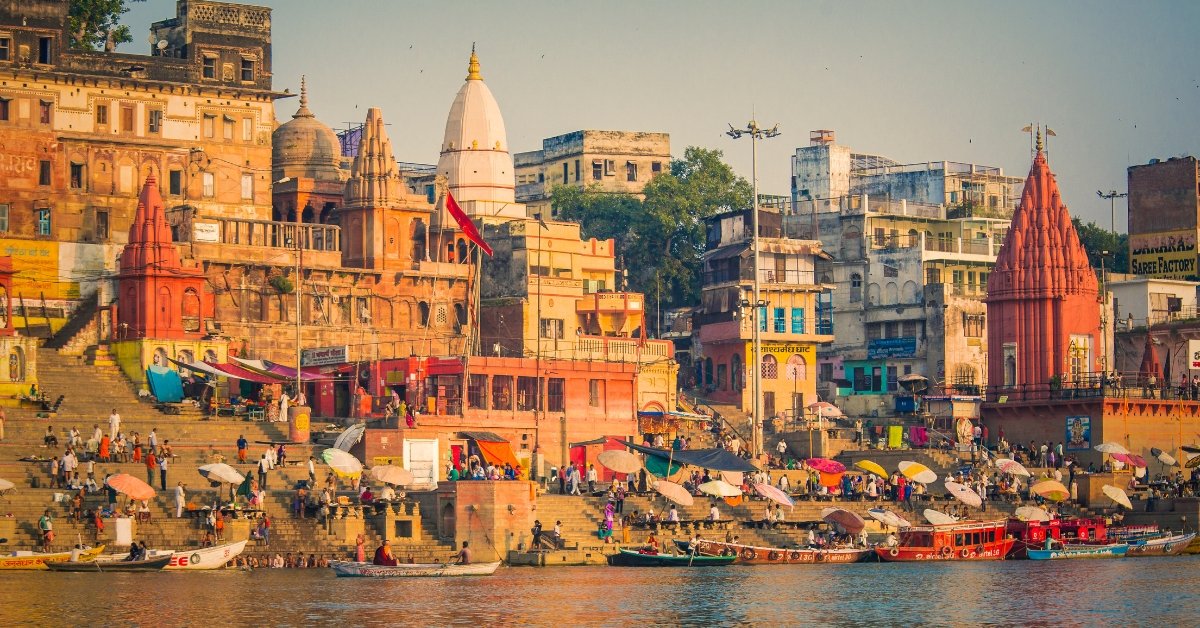
Staying connected while traveling in India is essential for navigating the country, staying in touch with friends and family, and accessing important information on the go.
Here are some comprehensive tips on how to stay connected with a local SIM card in India:
Why You Need a Local SIM Card
India’s mobile network is extensive and reliable, making it easy to stay connected almost everywhere. Having a local SIM card allows you to:
- Make local calls: Communicate easily with hotels, tour operators, and local contacts.
- Use data services: Access maps, translation apps, and social media.
- Receive OTPs (One-Time Passwords): Many services in India require OTP verification, including online payments and bookings.
Where to Buy a Local SIM Card
You can purchase a local SIM card at various locations:
- Airports: Major airports have kiosks from different mobile operators where you can buy a SIM card immediately upon arrival.
- Mobile Shops: Cities and towns have numerous mobile phone shops where you can purchase SIM cards. Popular operators include Airtel, Vodafone-Idea, and Jio.
- Hotel Assistance: Some hotels offer assistance in getting a local SIM card, which can save you the hassle of finding a store yourself.
What You Need to Buy a SIM Card
To buy a local SIM card in India, you will need:
- Passport: A copy of your passport and the original for verification.
- Visa: A copy of your Indian visa.
- Passport-sized Photo: Some shops may require a passport-sized photo.
- Local Address: Provide the address of your accommodation in India.
Choosing the Right Plan
India offers a variety of prepaid plans, so choose one that suits your needs:
- Data Plans: If you need internet access, look for plans that offer a substantial amount of data.
- Voice Plans: For making calls, choose a plan with sufficient talk time.
- Combo Plans: These include a balance of data, voice calls, and SMS.
| Operator | Plan Type | Cost (INR) | Data | Talk Time | Validity |
|---|---|---|---|---|---|
| Airtel | Combo | 249 | 1.5 GB/day | Unlimited | 28 days |
| Vodafone-Idea | Data | 299 | 2 GB/day | Unlimited | 28 days |
| Jio | Combo | 199 | 1.5 GB/day | Unlimited | 28 days |
Activating Your SIM Card
Once you have your SIM card, activation is usually quick and straightforward:
- Insert the SIM Card: Place the SIM card in your phone.
- Complete Verification: The seller will verify your documents and submit your application.
- Wait for Activation: Activation can take a few hours to 24 hours. You may need to restart your phone to complete the process.
- Verify with a Call: Some operators require you to make a verification call. Follow the instructions provided.
Staying Topped Up
Keep your SIM card active by topping up:
- Online Recharge: Use websites or apps like Paytm, Google Pay, or the mobile operator’s own app.
- Local Shops: Many convenience stores and mobile shops offer recharge services.
- Recharge Coupons: Available at various outlets, these coupons can be used to add credit to your account.
Tips for Using Your Local SIM Card
- Monitor Your Usage: Use apps provided by the operator to keep track of your data and call usage.
- Save Emergency Numbers: Save important numbers like the Tourist Helpline (1-800-111363) and local emergency contacts.
- Secure Your Phone: Enable security features like a PIN or fingerprint lock to protect your phone and data.
Staying connected in India with a local SIM card enhances your travel experience by providing you with essential communication tools and access to information.
By following these tips, you can ensure a seamless and connected journey through this incredible country.
9. Respect Local Customs

India is a country deeply rooted in tradition and culture, and respecting local customs is essential for a positive travel experience.
Here are some detailed tips to help you navigate cultural norms and show respect for the traditions of this diverse nation:
Dress Modestly
India is generally conservative when it comes to clothing, especially in rural areas and places of worship.
Here are some guidelines:
- For Women: Wear clothes that cover your shoulders, chest, and knees. Long skirts, loose pants, and blouses or tunics are ideal. Scarves or shawls can be useful for covering up in temples or mosques.
- For Men: Avoid shorts and sleeveless tops. Opt for long pants and shirts, especially when visiting religious sites.
Tip: In tourist areas like Goa, Western attire is more accepted, but it’s still a good idea to dress modestly when away from the beach.
Show Respect in Religious Places
India is home to many religions, including Hinduism, Islam, Sikhism, Buddhism, and Christianity.
Each has its own customs, especially regarding places of worship:
- Footwear: Always remove your shoes before entering temples, mosques, and some other religious sites. It’s common practice and a sign of respect.
- Photography: Ask for permission before taking photos inside religious places. Some sites strictly prohibit photography.
- Behavior: Maintain a respectful demeanor. Avoid loud conversations and be mindful of ongoing prayers and rituals.
Greetings and Social Etiquette
- Namaste: The traditional Indian greeting involves pressing your palms together in a prayer-like gesture and saying “Namaste.” This is a respectful way to greet people, especially elders.
- Right Hand: Use your right hand for giving and receiving items, as the left hand is considered impolite for such actions.
- Personal Space: While India can be crowded, it’s still important to be mindful of personal space, particularly with the opposite gender. Public displays of affection are generally frowned upon.
Dining Etiquette
- Eating with Hands: It’s common in India to eat with your hands, particularly for traditional meals. If you’re not comfortable, cutlery is usually available in restaurants. Always wash your hands before and after eating.
- Sharing Food: Offering food to others is a sign of hospitality. If someone offers you food, it’s polite to accept at least a small portion.
- Leftovers: Don’t waste food. Taking more than you can eat is considered disrespectful. Take small portions and go for seconds if necessary.
Respecting Festivals and Holidays
India is a land of festivals, each with its own unique customs and traditions.
Participating respectfully can be a wonderful cultural experience:
- Holi: The festival of colors involves throwing colored powders. Wear old clothes, and if you prefer not to participate, politely decline.
- Diwali: The festival of lights involves lighting oil lamps and fireworks. Respect local customs and safety regulations regarding fireworks.
- Ramadan: During the holy month of Ramadan, Muslims fast from dawn to sunset. Be respectful by not eating or drinking in public in predominantly Muslim areas.
Fact: India celebrates a plethora of festivals due to its cultural diversity. Almost every month has a significant festival, offering a glimpse into the rich traditions of the country.
General Tips
- Tipping: Tipping is appreciated in India, especially in restaurants and by guides and drivers. A 10% tip is generally sufficient.
- Bargaining: Bargaining is common in markets. Do so respectfully and with a smile. It’s part of the shopping culture.
- Gifts: If invited to someone’s home, bringing a small gift such as sweets or flowers is a nice gesture.
By understanding and respecting local customs, you not only show appreciation for India’s rich culture but also enhance your travel experience by connecting more deeply with the people and traditions of this incredible country.
10. Plan Your Trip According to the Seasons
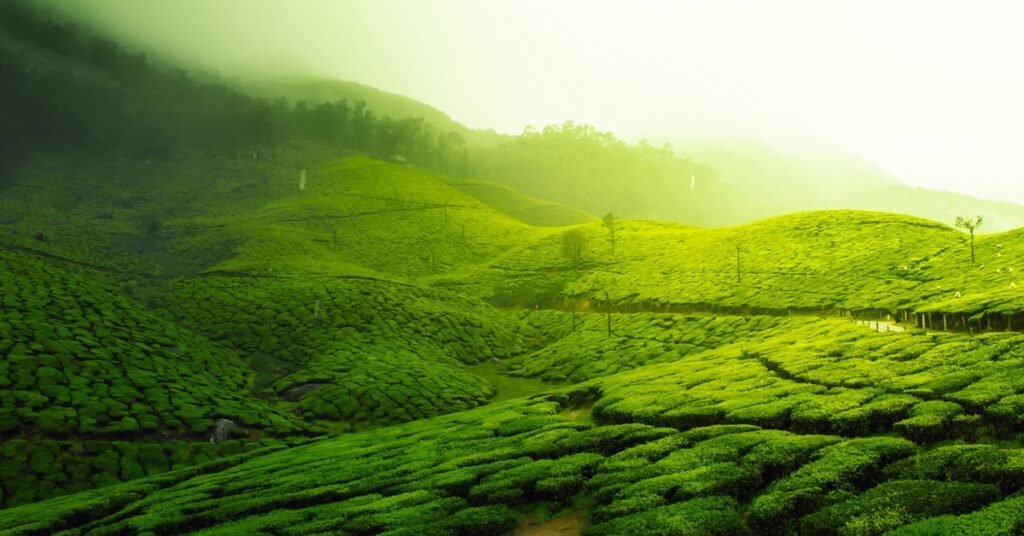
India’s climate varies significantly across regions and seasons, and planning your trip according to the best times to visit each area can make a huge difference in your travel experience.
Trivia: The Thar Desert in India is the world’s 20th-largest desert, offering unique experiences like camel safaris and camping under the stars.
Here’s a detailed breakdown to help you plan your journey:
| Season | Recommended Destinations |
|---|---|
| Winter (Dec-Feb) | Kerala, Goa, South India |
| Summer (May-Jun) | Ladakh, Himachal Pradesh |
| Monsoon (Jul-Aug) | Avoid heavy rain areas, check local advisories |
| Fall (Sep-Nov) | Festival season: Diwali in Jaipur, Durga Puja in Kolkata |
Winter (December to February)
- Best Places to Visit: Kerala, Goa, Rajasthan, South India
- Why Visit: This is the most pleasant time to visit many parts of India. The temperatures are cooler, making it ideal for exploring outdoor attractions and enjoying festivals.
- Top Activities:
- Kerala: Enjoy backwater cruises in Alleppey and wildlife spotting in Periyar National Park.
- Goa: Relax on the beaches, attend vibrant New Year parties, and explore Portuguese architecture.
- Rajasthan: Visit majestic forts and palaces in Jaipur, Udaipur, and Jaisalmer. The Desert Festival in Jaisalmer is a must-see.
Travel Tip: Pack layers, as the mornings and evenings can be chilly, especially in the northern regions.
Summer (March to June)
- Best Places to Visit: Ladakh, Himachal Pradesh, Sikkim, Uttarakhand
- Why Visit: While the plains can be scorching, the hill stations and higher altitude areas offer a cool respite.
- Top Activities:
- Ladakh: Trekking in the Himalayas, exploring Buddhist monasteries, and experiencing the vibrant Hemis Festival.
- Himachal Pradesh: Visit hill stations like Shimla, Manali, and Dharamshala. Enjoy adventure sports like paragliding in Bir Billing.
- Sikkim: Explore the stunning landscapes, Buddhist monasteries, and the vibrant culture of Gangtok and Pelling.
Travel Tip: Carry sunscreen, hats, and light, breathable clothing. Hydrate well to cope with the altitude changes.
Monsoon (July to September)
- Best Places to Visit: Kerala, Goa, Western Ghats, Rajasthan (for the lush landscapes)
- Why Visit: The monsoon transforms India into a lush, green paradise. It’s a great time for nature lovers and those looking to experience the romantic rains.
- Top Activities:
- Kerala: Enjoy the serene backwaters and lush greenery. It’s also the best time for Ayurvedic treatments.
- Western Ghats: Witness the stunning waterfalls and explore the UNESCO World Heritage sites.
- Rajasthan: The landscapes turn green, and the weather is cooler, making it a unique time to visit. The Teej Festival in Jaipur is a cultural highlight.
Travel Tip: Pack waterproof clothing and gear, and be prepared for possible travel delays due to heavy rains.
Fall (October to November)
- Best Places to Visit: Entire India (Festival season)
- Why Visit: The weather is generally pleasant, and it’s the festival season, offering a chance to experience India’s rich cultural traditions.
- Top Activities:
- Diwali in Jaipur: Witness the city of Jaipur adorned with lights and participate in the grand celebrations.
- Durga Puja in Kolkata: Experience the vibrant and elaborate celebrations dedicated to Goddess Durga.
- Pushkar Camel Fair: Attend one of the world’s largest camel fairs in Pushkar, Rajasthan, which includes cultural performances and competitions.
Travel Tip: Book accommodations and transport well in advance, as this is a peak travel season. Also, join in the local festivities and immerse yourself in the cultural celebrations.
11. Visit Attractions Early to Avoid Crowds
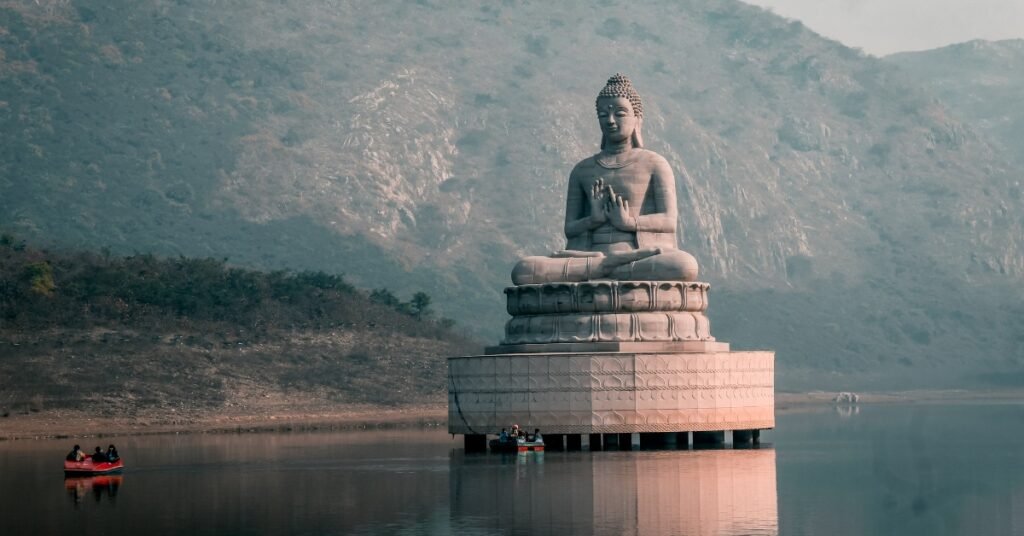
India is home to some of the world’s most iconic landmarks, such as the Taj Mahal, Jaipur’s Amber Fort, and the ancient temples of Varanasi.
These sites attract thousands of visitors every day, which can make for crowded and sometimes overwhelming experiences.
To ensure you get the most out of your visits, it is essential to plan strategically.
Here are some detailed tips to help you enjoy India’s attractions without the hassle of large crowds:
- Rise and Shine: Start your day early. Most popular tourist destinations open their gates around sunrise. Arriving early not only helps you avoid the crowds but also allows you to enjoy cooler temperatures and softer morning light, which is perfect for photography.
- Plan Your Itinerary: Create a detailed itinerary with the opening hours of the attractions you want to visit. Prioritize the most popular sites for early morning visits. For instance, if you’re visiting Agra, plan to see the Taj Mahal at sunrise. This stunning monument looks even more magical in the early morning light, and you’ll share the experience with far fewer tourists.
- Pre-book Tickets: Many of India’s top attractions offer online ticket booking. Pre-book your tickets to skip the long queues. Some places, like the Taj Mahal, have separate lines for ticket holders, allowing you quicker access.
- Stay Overnight Nearby: If you’re visiting a major attraction, consider staying overnight in a nearby hotel. This way, you can wake up early and reach the site before the day-trippers arrive. For example, staying in Agra allows you to be among the first to enter the Taj Mahal.
- Opt for Lesser-Known Entrances: Some popular sites have multiple entrances. Research to find out if there are less crowded entrances that you can use. This tactic can save you time and make your visit more pleasant.
- Avoid Peak Tourist Seasons: Plan your trip during the off-season or shoulder season. While the weather might be a bit challenging, you’ll find significantly fewer tourists at the major attractions. For example, visiting the Golden Temple in Amritsar during monsoon might be wet, but you’ll have a more peaceful experience.
- Hire a Local Guide: A knowledgeable local guide can enhance your visit by providing historical context and interesting stories about the site. Guides often know the best times to visit and the less crowded spots for the best views and photos.
- Evening Visits: Some attractions are less crowded in the late afternoon or evening. For instance, many forts and palaces in Rajasthan, like the Amber Fort in Jaipur, offer stunning views at sunset. Check the opening hours and plan accordingly.
- Use Fast-Track Services: In some popular destinations, you can buy fast-track or VIP tickets that allow you to bypass the regular queues. This service might be a bit more expensive but can save you significant time and frustration.
- Explore Nearby Sites: If an attraction is too crowded, consider visiting nearby sites that are less known but equally impressive. For example, while everyone flocks to the Taj Mahal, the Agra Fort nearby offers a rich historical experience with fewer crowds.
“The early bird catches the worm, and in India, the early traveler captures the essence of timeless beauty.”
Thousif Ziya
By following these tips, you’ll be able to enjoy India’s magnificent attractions more peacefully and intimately.
Remember, the key is to plan ahead, stay flexible, and embrace the journey with an open mind and an early start.
12. Explore the Countryside: Discover the Heart of India

While India’s bustling cities like Delhi, Mumbai, and Bangalore are vibrant and full of life, the true essence of India lies in its countryside.
The rural areas offer a serene and authentic experience that’s vastly different from urban life.
Here are some tips and reasons to explore the countryside:
Discover Unique Landscapes
India’s countryside is home to some of the most breathtaking landscapes.
From the lush tea plantations in Assam and Kerala to the arid deserts of Rajasthan, the variety is astounding.
You can trek in the Himalayas, take a houseboat ride through Kerala’s backwaters, or camp in the Thar Desert.
Experience Traditional Village Life
Most of India’s population still lives in villages.
Visiting these villages allows you to experience traditional Indian life, away from the modernity of the cities.
Engage with locals, learn about their customs, and perhaps even participate in daily activities such as farming, pottery, or weaving.
Visit National Parks and Wildlife Sanctuaries
India is rich in biodiversity, and its countryside is dotted with numerous national parks and wildlife sanctuaries.
These protected areas are home to some of the most exotic wildlife, including Bengal tigers, Indian elephants, and various bird species.
Some notable parks include:
| Park/Wildlife | Location | Highlights |
|---|---|---|
| Jim Corbett National Park | Uttarakhand | Tiger safari, bird watching |
| Kaziranga National Park | Assam | One-horned rhinoceros |
| Ranthambore National Park | Rajasthan | Historic forts, tiger sightings |
| Sundarbans | West Bengal | Mangrove forests, Bengal tigers |
| Periyar Wildlife Sanctuary | Kerala | Elephants, boat cruises |
Immerse in Local Festivals and Traditions
Rural India is a treasure trove of festivals and traditions that vary from one region to another.
Timing your visit to coincide with local festivals can be a unique experience.
Witness traditional dances, music, and rituals that have been preserved for generations.
Some festivals to look out for include:
- Pongal in Tamil Nadu: A harvest festival celebrated with much fervor.
- Baisakhi in Punjab: Marking the Punjabi New Year and the harvest season.
- Makar Sankranti: Celebrated across India with kite flying and other local traditions.
- Onam in Kerala: A festival marked by boat races, floral decorations, and traditional feasts.
Participate in Sustainable Tourism
Many rural areas in India are now embracing sustainable tourism practices.
This includes eco-friendly lodges, community-based tourism, and farm stays.
By participating in these, you not only get an authentic experience but also contribute to the local economy and conservation efforts.
Fact: Did you know that the Western Ghats, a mountain range that runs parallel to the western coast of India, is a UNESCO World Heritage site? It’s one of the eight “hottest hotspots” of biological diversity in the world.
Tips for Exploring the Countryside
- Research and Plan: Before venturing into the countryside, research the area to understand the best times to visit, cultural norms, and local customs.
- Hire a Local Guide: Local guides can provide invaluable insights into the area’s history, culture, and natural beauty. They can also help navigate language barriers.
- Respect Local Culture: Dress modestly, seek permission before taking photographs, and be mindful of local customs and traditions.
- Stay Connected: While rural areas may have limited connectivity, having a local SIM card and informing someone about your travel plans is advisable.
- Pack Essentials: Carry basic medical supplies, a refillable water bottle, and any personal necessities, as rural areas may have limited access to these.
“The charm of India’s countryside lies in its simplicity and authenticity. Every village has a story, every landscape a hidden treasure.”
Thousif Ziya
Exploring the countryside of India offers a unique and enriching travel experience.
It’s a chance to slow down, connect with nature, and immerse yourself in the rich tapestry of rural life.
Whether it’s the rolling hills of the Western Ghats, the tranquil backwaters of Kerala, or the majestic deserts of Rajasthan, the countryside of India promises an unforgettable journey.
Conclusion
As you embark on your first journey to India, I hope these tips help you navigate the beautiful chaos that awaits you.
Traveling to India for the first time is not just about sightseeing; it is about immersing yourself in the culture, savoring the food, and embracing unexpected adventures.
Before you go, let me share some more gems that might interest you.
If you found these tips helpful, you will also love exploring my other articles.
For instance, 100 Bollywood Quotes for Travel Inspiration can give you a unique cultural insight and a dash of inspiration for your trip.
Are you planning a visit to Dubai soon?
Take advantage of my guide on the 14 Best New Cafes in Dubai: Find the Ultimate Coffee Spots and 13 New Tourist Attractions in Dubai You Must Visit. These articles will help you uncover the most incredible spots and latest attractions.
I have put together some essential reads for solo female travelers.
20 Mistakes Solo Female Travelers Make—How to Avoid Them is a must-read to ensure a smooth trip.
Plus, 200 Empowering Solo Travel Quotes for Women: Embrace the Adventure and 20 Affordable and Safe Destinations Every Solo Female Traveler Should Explore will inspire and guide you in planning your adventures.
If you are a gadget lover, check out 20 Essential Travel Gadgets for Solo Travelers.
These gadgets can make your travel experience more comfortable and fun.
Moreover, if you love a good travel quote as much as I do, check out 100 Short Travel Quotes: Inspiring Your Next Travel Adventure and 200 Inspirational Travel Quotes from Famous Authors to Ignite Your Wanderlust.
They are perfect for fueling your wanderlust.
For those looking to save a few bucks, my article on 20 Money-Saving Tips for Solo Travelers is packed with practical advice.
Moreover, if you need a refresher, the 12 Important Travel Tips from Thousif Ziya for First-Time Travelers is always a good place to start.
Thanks for visiting and taking the time to read my tips.
Your adventure in India is just the beginning; there is much more to explore.
Feel free to dive into any of these articles and let me know your thoughts.
Safe travels, and may your journey be filled with unique experiences and unforgettable memories!
